Barbara Ross's Blog, page 14
August 27, 2015
A Christmas Novella
Hi. Barb here. It’s August and it’s hot and humid for Maine and I am sitting on the porch thinking about Christmas.
So, I haven’t exactly announced this anywhere yet, though I haven’t been quiet about it, either, so let this serve as the “official” announcement. I am writing a holiday novella about Julia Snowden and Busman’s Harbor for Kensington for fall of 2016. (I don’t have the exact release date, but it seems to me Kensington’s holiday books usually come out in October.)
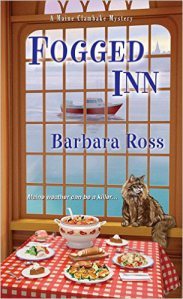 Kensington has done a series of these books, packaging novellas by Joanne Fluke, Laura Levine and Leslie Meier. I had read them and really enjoyed them. The truth of the matter was, I desperately wanted to be in one. So when I sent my proposal for books four through six to Kensington, I set the fourth (Fogged Inn) the week after Thanksgiving and the fifth (Iced Under) in mid-February, neatly side-stepping the holidays. I confided my desire to some of the Wickeds during our retreat in 2014, but I never mentioned it to my editor at Kensington, John Scognamiglio, or my agent, John Talbot. In other words, I never said anything to anyone who could actually do anything about it.
Kensington has done a series of these books, packaging novellas by Joanne Fluke, Laura Levine and Leslie Meier. I had read them and really enjoyed them. The truth of the matter was, I desperately wanted to be in one. So when I sent my proposal for books four through six to Kensington, I set the fourth (Fogged Inn) the week after Thanksgiving and the fifth (Iced Under) in mid-February, neatly side-stepping the holidays. I confided my desire to some of the Wickeds during our retreat in 2014, but I never mentioned it to my editor at Kensington, John Scognamiglio, or my agent, John Talbot. In other words, I never said anything to anyone who could actually do anything about it.
So imagine my surprise when I got a call from John Talbot in January of this year telling me I’d been offered the chance to write this novella. Even he was surprised. “Sort of out of the blue…” he said. Hey, universe. Thanks!
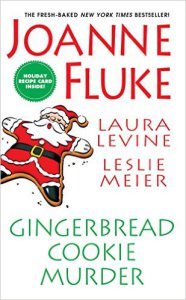 This novella will include stories by Leslie Meier, who writes the Lucy Stone Mysteries which are set in Tinker’s Cove, Maine and by Lee Hollis, who writes the Hayley Powell Food and Cocktails Mysteries set in Bar Harbor, Maine. I’ve known Leslie for a number of years through Sisters in Crime New England and she’s someone I really admire. I also like Lee Hollis’ books (actually, the brother-sister writing team of Rick Copp and Holly Copp Simason). So I am psyched!
This novella will include stories by Leslie Meier, who writes the Lucy Stone Mysteries which are set in Tinker’s Cove, Maine and by Lee Hollis, who writes the Hayley Powell Food and Cocktails Mysteries set in Bar Harbor, Maine. I’ve known Leslie for a number of years through Sisters in Crime New England and she’s someone I really admire. I also like Lee Hollis’ books (actually, the brother-sister writing team of Rick Copp and Holly Copp Simason). So I am psyched!
The theme is Maine, obviously, but also eggnog. And I just happen to have been savoring, for years (you’ll excuse the pun) a killer eggnog anecdote. So, again, kismet.
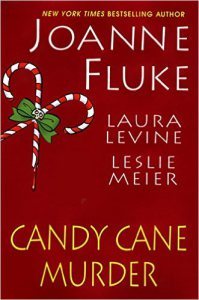 How is writing a novella? The truth is, I am bursting with over-confidence. My short stories are always too long, and my novels are always to short, so I’m hoping the novella (defined by Kensington as 20,000 to 30,000 words) is my “natural length.” I have the whole story in my head (unusual for me). I also have the tone, which I’m hoping will be a little more lighthearted and funnier than the Clambake series as a whole, but still very much a part of it. I just have to, you know, write it. It’s due January 15, which would be highly doable, except that Iced Under, the next book in the Maine Clambake series, is due March 1. Ulp.
How is writing a novella? The truth is, I am bursting with over-confidence. My short stories are always too long, and my novels are always to short, so I’m hoping the novella (defined by Kensington as 20,000 to 30,000 words) is my “natural length.” I have the whole story in my head (unusual for me). I also have the tone, which I’m hoping will be a little more lighthearted and funnier than the Clambake series as a whole, but still very much a part of it. I just have to, you know, write it. It’s due January 15, which would be highly doable, except that Iced Under, the next book in the Maine Clambake series, is due March 1. Ulp.
I’ll let you know how it goes. Meanwhile, I am thrilled to have the opportunity!
What about you, readers? Do you like these collections? Just the right length to sample a new author, or too short to satisfy?
Filed under: Barb's posts Tagged: eggnog, Hayley Powell Food and Cocktails mysteries, holiday novella, John Scognamiglio, John Talbot, Kensington, Lee Hollis, leslie meier, Lucy Stone Mysteries, maine clambake mysteries

July 23, 2015
How I Learned to Relax About Being a “Cozy” Author and Just Write the Damn Books–Part III
Barb here, sitting on her front porch in Maine and writing on an flawless summer day
Back in February, I started a series of posts about how I came to terms with being a cozy writer. The first one talked about why this designation was an issue for me in the first place. The second, in March, was about how I came to be comfortable as a person with an identity as a cozy author.
Then life intervened. In April-May-June I was hit successively with Crime Bake website deadline-knee crisis-book deadline. But, though as a person I have many, many flaws, I am, at the end of the day (and usually literally at the end of the day), a completer. So herewith is Part III.
So when we left our intrepid heroine, she was happy to be writing a cozy series and comfortable adopting the image of a cozy author. Only one small issue remained.
Yes, I am going to say it.
Cozy mysteries often get no respect.
(She said it!)
There are a few reasons for this.
One is, there’s a bit of a hierarchy in fiction writing, and it looks something like this.
The literary fiction writers look down on the mystery writers
The mystery writers look down on the romance writers
The romance writers look down on the poets
The poets look down on the literary fiction writers
(cycle starts again)
Of course this is a weird, crazy exaggeration, but you know it’s there, right? And if I were more clever, I could probably fit lots more genres–horror, fantasy, YA, westerns, etc.–into the hierarchy. I remember vividly being at the Key West Literary Seminar and hearing just about every top name in the crime fiction world asked some version of the question, “So did you ever want to write a real book?” (My imperfect memory is that only Benjamin Black–who as John Banville is a renowned literary writer–and Joyce Carol Oates escaped this question.)
So there’s that.
There’s also a weird hierarchy within the crime fiction realm. It’s not as clear, but for sure “literary” crime fiction is at the top, followed by thrillers, traditional mysteries, noir, procedurals and suspense (in some order or another), with romantic suspense and finally cozies at the bottom.
So the question for me was not, can a mystery be good literature? [As pondered by so many, like Edmund Wilson in “Who Cares Who Killed Roger Ackroyd?” (The New Yorker, January 20, 1945), Raymond Chandler in “The Simple Art of Murder” (1950) or even Dorothy L. Sayers in her Introduction to the 1928-1929 Omnibus of Crime.] That’s another discussion for another day.
The question was, can a cozy be good crime fiction?
Was it a reasonable question? I think it was. After all, a cozy has never won an Edgar® Award for Best Novel and most cozy writers believe one never will. So why would I want to work this hard at something a whole lot of people–to be clear, people whom I like and respect as writers–think can never be “good?”
Let’s take this apart. To do so, first we have to agree on what a cozy is. The most common definition I’ve seen is that a cozy is a mystery, usually, but not always, featuring an amateur sleuth. The cozy will offer a crime, usually a murder, and a solution, usually the identification of the guilty party and bringing of that guilty party to justice. The reader will meet the guilty party and all the suspects in the course of the book. The mystery will be anchored in a community, and the sleuth, suspects and guilty party will be a part of the community in some way -ie not just there to murder or to uncover a murderer.
Aside from the amateur sleuth bias, and perhaps a bit more emphasis on setting, I’ve just defined a traditional mystery. And no one would argue that a traditional mystery can’t be “good” or even “literary.” (Okay, a lot of people would argue that, including the aforementioned Wilson, Chandler and Sayres, but again, this is not about that. The point is, there’s no reason within our genre, cozy mysteries can’t be good.)
To that definition, many people append, “In a cozy mystery, cursing is kept to a minimum and most sex and gore are kept ‘off the page.'”
I personally chafe at this definition. But not because I have the slightest interest in writing something very gory or explicitly sexual. I don’t wander to my desk in the morning thinking, “Drat! Another day of not torturing children. I feel so restricted.” Because, believe me, I don’t. I just hate it that my subgenre is defined by so many people by what’s NOT in it. If what were important is what’s not in it, I could hand 350 blank pages in to my publisher and be done with it.
Is that final restriction why cozy mysteries can’t be “good?”
After all, if cozy authors deal with murder at such a remove that we can’t describe the horror or the sorrow, and can’t evince those emotions in our audience, then can we really be writing something “good?” I would argue we can, because I have seen many cozy authors very skillfully evoke the horror of unexpected, violent death by focusing on the reactions and emotions of the characters, rather than the blood and the guts. If anything, I think that’s harder and requires more skill.
So that’s not a reason a cozy mystery can’t be “good.”
Is it that cozies can’t be good because there is too much formula required? I don’t think so. Most crime fiction has to contend on some level with audience expectations as to form. As does most prose fiction. As did Shakespeare in his comedies, histories, tragedies and sonnets.
Nope, audience expectations don’t mean cozies can’t be good.
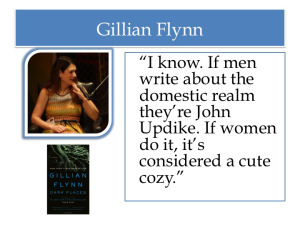 Is it that cozies usually deal with the small and domestic? Can a book that ignores the vast sweep of history or the maelstrom of current events or the conundrum of the human condition be “good?”
Is it that cozies usually deal with the small and domestic? Can a book that ignores the vast sweep of history or the maelstrom of current events or the conundrum of the human condition be “good?”
Well, first of all, most cozies don’t ignore those things. Almost all take place in a certain place at a certain time. While they might look at human issues from the inside out, or from specific to the general, instead of the other way around, that doesn’t mean they ignore them.
But also, lots of people have written lots of great, great literary fiction about the domestic realm. In fact, making big events real by showing the way they affect specific people is one of the hallmarks of great fiction writing.
So that’s not the reason cozies can’t be good.
So now let’s talk about the elephant in the room. Both of the subgenres at the bottom of the “respect” heap in crime fiction-romantic suspense and cozies– are primarily written by women for women. Is that why cozies can’t be good?
That is, of course, ridiculous. Or I wish it were.
For me, the best books transport me. They take me to a place outside of myself. When that happens, my problems, petty and serious, recede for a time, and the lives of others, the lives of characters, become primary. I learn about professions, human communities and places I can’t learn about from my friends. And I care what happens to the characters.
This is what I think of as the four Es of reading fiction–escape, entertainment, education and empathy.
You don’t need all four in every book, but you probably need three for a book to be satisfying. Or I do. I also need a level of complexity of prose, structure, plot and character to engage me. I can’t be transported if any of those elements are so simply rendered that I can still mentally balance my check book while reading.
That’s my definition of a good book. Is there anything in my personal definition of a good book that says cozies can’t be good? Nope, not seeing it.
So that’s how I got comfortable with spending my time, blood, sweat, and tears writing cozies. And that’s why I say it loud and proud whenever people ask me what I write. Because there is no reason on earth someone can’t write a cozy that is also a good book.
John T. Irwin described literary mysteries as ones you can re-read and get something new out of each time, even though you know the solution. Do you think that could ever happen with a cozy?
I know I haven’t achieved it, but the fact that it is “out there” means there is something to aspire to.
Readers, have at it. Do you think cozies can be “good” books? Why can’t they get any respect? Does it matter? Does it matter to you?
Filed under: Barb's posts Tagged: cozy mystery, crime fiction, literary mystery, traditional mystery

How I Learned to Relax About Being a “Cozy” Author and Just Write the Damn Books–Part IIIp
Barb here, sitting on her front porch in Maine and writing on an flawless summer day
Back in February, I started a series of posts about how I came to terms with being a cozy writer. The first one talked about why this designation was an issue for me in the first place. The second, in March, was about how I came to be comfortable as a person with an identity as a cozy author.
Then life intervened. In April-May-June I was hit successively with Crime Bake website deadline-knee crisis-book deadline. But, though as a person I have many, many flaws, I am, at the end of the day (and usually literally at the end of the day), a completer. So herewith is Part III.
So when we left our intrepid heroine, she was happy to be writing a cozy series and comfortable adopting the image of a cozy author. Only one small issue remained.
Yes, I am going to say it.
Cozy mysteries often get no respect.
(She said it!)
There are a few reasons for this.
One is, there’s a bit of a hierarchy in fiction writing, and it looks something like this.
The literary fiction writers look down on the mystery writers
The mystery writers look down on the romance writers
The romance writers look down on the poets
The poets look down on the literary fiction writers
(cycle starts again)
Of course this is a weird, crazy exaggeration, but you know it’s there, right? And if I were more clever, I could probably fit lots more genres–horror, fantasy, YA, westerns, etc.–into the hierarchy. I remember vividly being at the Key West Literary Festival and hearing just about every top name in the crime fiction world asked some version of the question, “So did you ever want to write a real book?” (My imperfect memory is that only Benjamin Black–who as John Banville is a renowned literary writer–and Joyce Carol Oates escaped this question.)
So there’s that.
There’s also a weird hierarchy within the crime fiction realm. It’s not as clear, but for sure “literary” crime fiction is at the top, followed by thrillers, traditional mysteries, noir, procedurals and suspense (in some order or another), with romantic suspense and finally cozies at the bottom.
So the question for me was not, can a mystery be good literature? [As pondered by so many, like Edmund Wilson in “Who Cares Who Killed Roger Ackroyd?” (The New Yorker, January 20, 1945), Raymond Chandler in “The Simple Art of Murder” (1950) or even Dorothy L. Sayers in her Introduction to the 1928-1929 Omnibus of Crime.] That’s another discussion for another day.
The question was, can a cozy be good crime fiction?
Was it a reasonable question? I think it was. After all, a cozy has never won an Edgar® Award for Best Novel and most cozy writers believe one never will. So why would I want to work this hard at something a whole lot of people–to be clear, people whom I like and respect as writers–think can never be “good?”
Let’s take this apart. To do so, first we have to agree on what a cozy is. The most common definition I’ve seen is that a cozy is a mystery, usually, but not always, featuring an amateur sleuth. The cozy will offer a crime, usually a murder, and a solution, usually the identification of the guilty party and bringing of that guilty party to justice. The reader will meet the guilty party and all the suspects in the course of the book. The mystery will be anchored in a community, and the sleuth, suspects and guilty party will be a part of the community in some way -ie not just there to murder or to uncover a murderer.
Aside from the amateur sleuth bias, and perhaps a bit more emphasis on setting, I’ve just defined a traditional mystery. And no one would argue that a traditional mystery can’t be “good” or even “literary.” (Okay, a lot of people would argue that, including the aforementioned Wilson, Chandler and Sayres, but again, this is not about that. The point is, there’s no reason within our genre, cozy mysteries can’t be good.)
To that definition, many people append, “In a cozy mystery, cursing is kept to a minimum and most sex and gore are kept ‘off the page.'”
I personally chafe at this definition. But not because I have the slightest interest in writing something very gory or explicitly sexual. I don’t wander to my desk in the morning thinking, “Drat! Another day of not torturing children. I feel so restricted.” Because, believe me, I don’t. I just hate it that my subgenre is defined by so many people by what’s NOT in it. If what were important is what’s not in it, I could hand 350 blank pages in to my publisher and be done with it.
Is that final restriction why cozy mysteries can’t be “good?”
After all, if cozy authors deal with murder at such a remove that we can’t describe the horror or the sorrow, and can’t evince those emotions in our audience, then can we really be writing something “good?” I would argue we can, because I have seen many cozy authors very skillfully evoke the horror of unexpected, violent death by focusing on the reactions and emotions of the characters, rather than the blood and the guts. If anything, I think that’s harder and requires more skill.
So that’s not a reason a cozy mystery can’t be “good.”
Is it that cozies can’t be good because there is too much formula required? I don’t think so. Most crime fiction has to contend on some level with audience expectations as to form. As does most prose fiction. As did Shakespeare in his comedies, histories, tragedies and sonnets.
Nope, audience expectations don’t mean cozies can’t be good.
 Is it that cozies usually deal with the small and domestic? Can a book that ignores the vast sweep of history or the maelstrom of current events or the conundrum of the human condition be “good?”
Is it that cozies usually deal with the small and domestic? Can a book that ignores the vast sweep of history or the maelstrom of current events or the conundrum of the human condition be “good?”
Well, first of all, most cozies don’t ignore those things. Almost all take place in a certain place at a certain time. While they might look at human issues from the inside out, or from specific to the general, instead of the other way around, that doesn’t mean they ignore them.
But also, lots of people have written lots of great, great literary fiction about the domestic realm. In fact, making big events real by showing the way they affect specific people is one of the hallmarks of great fiction writing.
So that’s not the reason cozies can’t be good.
So now let’s talk about the elephant in the room. Both of the subgenres at the bottom of the “respect” heap in crime fiction-romantic suspense and cozies– are primarily written by women for women. Is that why cozies can’t be good?
That is, of course, ridiculous. Or I wish it were.
For me, the best books transport me. They take me to a place outside of myself. When that happens, my problems, petty and serious, recede for a time, and the lives of others, the lives of characters, become primary. I learn about professions, human communities and places I can’t learn about from my friends. And I care what happens to the characters.
This is what I think of as the four Es of reading fiction–escape, entertainment, education and empathy.
You don’t need all four in every book, but you probably need three for a book to be satisfying. Or I do. I also need a level of complexity of prose, structure, plot and character to engage me. I can’t be transported if any of those elements are so simply rendered that I can still mentally balance my check book while reading.
That’s my definition of a good book. Is there anything in my personal definition of a good book that says cozies can’t be good? Nope, not seeing it.
So that’s how I got comfortable with spending my time, blood, sweat, and tears writing cozies. And that’s why I say it loud and proud whenever people ask me what I write. Because there is no reason on earth someone can’t write a cozy that is also a good book.
John T. Irwin described literary mysteries as ones you can re-read and get something new out of each time, even though you know the solution. Do you think that could ever happen with a cozy?
I know I haven’t achieved it, but the fact that it is “out there” means there is something to aspire to.
Readers, have at it. Do you think cozies can be “good” books? Why can’t they get any respect? Does it matter? Does it matter to you?
Filed under: Barb's posts Tagged: cozy mystery, crime fiction, literary mystery, traditional mystery

June 25, 2015
It’s Too Soon To Tell
by Barbara, on her porch in Boothbay Harbor, looking at the majestic windjammers and waiting for fireworks later
I rarely, rarely write poetry, but I recently came across this poem I wrote in a writing class in 2007. The writing prompt was, “Finish the phrase, ‘It’s too soon to tell.'” I wrote it before the thought of grandchildren had even occurred to me. (Or to either of my kids, thank goodness.) Anyway, it tickled me and I decided to share it.
It’s Too Soon To Tell
It’s too soon to tell
Will he have his mother’s fine skin,
His father’s auburn hair,
His Uncle Charlie’s protuberant ears?
It’s too soon to tell
Will he have his grandmother’s gift for music,
His grandfather’s way with words,
Cousin Violet’s wonderful laugh?
Will he run races like his Uncle Pearce?
Build great cities like his Cousin Neville?
Or write software like Rita’s daughter Lil?
It’s too soon to tell
Will he have Aunt Clea’s love of the bottle,
Uncle Henry’s black depressions,
Cousin Mortimer’s passion for unsuitable women,
Or Cousin Jasper’s for unsuitable men?
Will he know great love?
Will he go to war?
Will he know want, or will his pockets always be full?
This much we do know
He smells like heaven
His smile lights up the sky
His cry breaks your heart
And he holds each of us in the palm of his hand
Because we can’t wait to discover
The oh, so many things
It’s just too soon to tell
Filed under: Barb's posts Tagged: barbara ross poetry

May 25, 2015
Cover Reveal-Fogged Inn (A Maine Clambake Mystery #4)
by Barb, who has a book due–okay actually this book due–June 1 (Ulp!)
Look what just showed up on Amazon. (This is the first I’m seeing it, too.)

What do you think?
Would you buy this book?
Do you see the inspiration from this Pinterest board?
What do you think the story is about? (Note: If you come up with ideas that are better than my 98% completed book, I’m going to……possibly steal them for another book. :-) )
Let me know!
Filed under: Barb's posts Tagged: Barbara Ross, Cover, Fogged inn, Maine Clambake Mystery

May 7, 2015
It’s a Horizontal Life
by Barb Ross, who wishes she were out in the sunshine enjoying New England’s first sustained visit from spring.
But first, a word from our sponsor.
Randomly selected winners from their comments on Our Second Anniversary Blog post are: Ruth Nixon, Tiger Wiseman, Sandy Bartles, Jane Werthmann, Mary Feliz, and Nancy Roessner. Please contact Edith at edithmaxwellauthor at gmail dot com if you haven’t already heard from her. We need your mailing address. And congratulations!
We now return to our regularly scheduled programming.
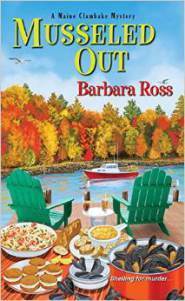 It’s been wonderful celebrating the release of Musseled Out this week with my Wicked sistahs. It’s been especially wonderful, because I’ve been doing it from my bed. Right before Malice Domestic, I did something excruciating to my knee. I’ve been mostly in bed with my leg up, with occasional breaks on the couch, with my leg up, ever since.
It’s been wonderful celebrating the release of Musseled Out this week with my Wicked sistahs. It’s been especially wonderful, because I’ve been doing it from my bed. Right before Malice Domestic, I did something excruciating to my knee. I’ve been mostly in bed with my leg up, with occasional breaks on the couch, with my leg up, ever since.
“How terrible. And you’re launching your book this week,” my friend Lucy Burdette said.
“Barb can launch a book from a horizontal position,” my friend Kate Flora reassured her.
After an extended pity party while everyone was a Malice, I realized Kate was right.

Barbara Cartland writing
In the past couple of weeks, I’ve visited Dru Ann’s Book Musings in the persona of my character Chris Durand. I’ve had a lovely chat with E. B. Davis over at Writers Who Kill. I had another conversation, this one over Skype, with Stephen Campbell at CrimeFiction.FM. And I shared a recipe for mussels at Mystery Lovers Kitchen and recipes for shrimp and lobster polenta and hot lobster dip on Kensington’s site.

Edith Wharton writing in bed.
Note: This is a recreation. Though EW did write in bed, it’s hard to imagine her allowing herself to be photographed there.
Lots of people have weighed in with their reactions to Musseled Out, including Sandra Martin at RT Book Reviews, Katrina Niidas Holm at Crimespree Magazine, Dru Ann Love at Dru’s Book Musings, Mark Baker at Carstairs Considers, Beth Kannell at Kingdom Books and many others, (For a more complete listing, click here.)
Mystery writers who were first published in the era before mine often wax nostalgic for the days when authors were sent out on tours and there were many, many independent mystery bookstores to visit. I get caught up in that, too, because I still miss Kate’s Mystery Books just down the street from me. But now all I can say is, “Thank goodness things have changed.” I never could have gone on tour.
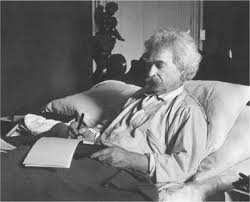
Mark Twain writing in bed
Do you think we’ll ever sit around reminiscing about the “good old days,” you know, when we used to launch a book using ezines, blogs, podcasts, e-mail newsletters and social media? The youngsters will probably roll their eyes and sigh at our old-fashioned notions.
Filed under: Barb's posts Tagged: Maine Clambake Mystery, musseled out

March 26, 2015
How I Learned to Relax About Being a “Cozy” Author and Just Write the Damn Books–Part II
by Barb, who is back in New England where just recently there are signs of the slimmest possibility of spring
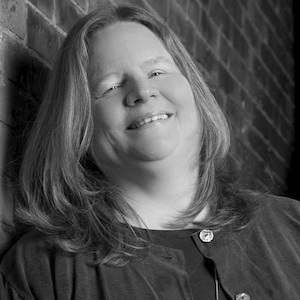 So, when last we left our intrepid heroine, she had learned she was about to be a “cozy” mystery author, and she was freaked out about it. You can read about the events that lead up to that here: How I Learned to Relax About Being a “Cozy” Author and Just Write the Damn Books–Part I.
So, when last we left our intrepid heroine, she had learned she was about to be a “cozy” mystery author, and she was freaked out about it. You can read about the events that lead up to that here: How I Learned to Relax About Being a “Cozy” Author and Just Write the Damn Books–Part I.
At the end of that post I say:
If the author is the brand, and the brand is the author, I was in deep trouble. People might describe me in a number of ways, but nobody, including my kids, would ever describe me as cozy. I’m a city girl at heart. I have no pets, I don’t do crafts. I swear like a sailor. I don’t even cook if I can avoid it. Ulp.
The image of cozy mysteries worried me. So often they’re defined as what they are not. You know, it’s a traditional mystery, with an amateur sleuth, but with no sex, gore or swearing. That drove me crazy. Here I am writing 70,000+ words, and the genre is defined by what’s not in there, instead of what is. It bugged the heck out of me. (Or the hell out of me, as I really would say in my real life.)
Today, in Part II, I’m tackling #1 above.
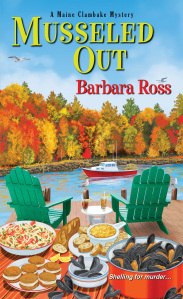 When I look back at it now, it all seems so silly. But at the time, I really was mega-stressed about not being able to embody the brand of what I thought it meant to be cozy. Why was this?
When I look back at it now, it all seems so silly. But at the time, I really was mega-stressed about not being able to embody the brand of what I thought it meant to be cozy. Why was this?
Well, one reason is writers on the verge of publication, and particularly a first publication or a new project, get freaked out exceptionally easily. Yes, you’re all giddy and happy with the accomplishment, but you are also putting yourself out there to be judged in a way that most people never do. It’s scary. You don’t want to disappoint readers, embarrass your family and let down your friends.
So a lot of my anxiety about not being a cozy person was free-floating anxiety that happened to coalesce around that particular point.
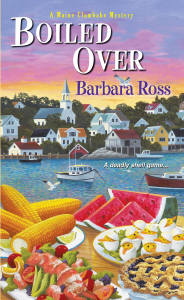 Plus, my husband thinks I am peculiarly susceptible to what he calls “Fraud Syndrome.” It’s true that I was a business person for twenty-five years and never thought of myself that way. It’s also true I usually feel I have to have absolute mastery of a subject or skill to hold myself out as an expert. But I think the writer’s life reinforces my already existing tendency. Most writers feel like frauds most of the time. There’s the many years you tell people you’re writing and they, polite and interested, ask, “What have you published?” and you say, “Hammida, hammida, hammida…” Then there are the later years when you say, “I am a writer,” and people ask, polite and interested, “Anything I would have heard of?” and you say…etc. This pretty much never ends. I once heard Lee Child say the reason he gave his blessing to Tom Cruise as Jack Reacher was because whenever he got on an airplane and told his seatmate what he did, the question was, “Anything that’s been made into a movie?”
Plus, my husband thinks I am peculiarly susceptible to what he calls “Fraud Syndrome.” It’s true that I was a business person for twenty-five years and never thought of myself that way. It’s also true I usually feel I have to have absolute mastery of a subject or skill to hold myself out as an expert. But I think the writer’s life reinforces my already existing tendency. Most writers feel like frauds most of the time. There’s the many years you tell people you’re writing and they, polite and interested, ask, “What have you published?” and you say, “Hammida, hammida, hammida…” Then there are the later years when you say, “I am a writer,” and people ask, polite and interested, “Anything I would have heard of?” and you say…etc. This pretty much never ends. I once heard Lee Child say the reason he gave his blessing to Tom Cruise as Jack Reacher was because whenever he got on an airplane and told his seatmate what he did, the question was, “Anything that’s been made into a movie?”
Fraud Syndrome, indeed.
How I finally got over it was, I participated in the Launch Lab at Grub Street. It’s a class for people with books to be published within the year. They give you tons of valuable information, and more than anything, they teach you to CALM THE HECK DOWN.
The course took place over three weekends, and at some point, during a consultation, I moaned to Lynne Griffin, one of the instructors, about how freaked out I was about the whole cozy thing.
Then she slapped me and told me to get over myself.
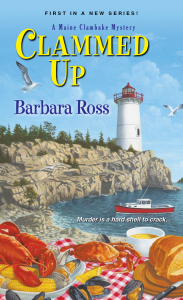 She didn’t actually slap me, or even use those words. Lynne Griffin is one of the most professional people I know. But she might as well have, because whatever she said was just as effective. (I later discovered pretty much everyone in the Lab had had this experience. Not necessarily over sub-genre classification, though I wasn’t the only one. Lynne Griffin telling you to get over yourself is one of the best features of the Launch Lab.)
She didn’t actually slap me, or even use those words. Lynne Griffin is one of the most professional people I know. But she might as well have, because whatever she said was just as effective. (I later discovered pretty much everyone in the Lab had had this experience. Not necessarily over sub-genre classification, though I wasn’t the only one. Lynne Griffin telling you to get over yourself is one of the best features of the Launch Lab.)
Once I stopped freaking out, I saw how ridiculous I had been.
For one thing, as I spent time in the cozy world, I discovered it was filled with all kinds of people who read all kinds of stuff. And have all kinds of jobs, hobbies and interests. Not everyone had gray hair in a bun with knitting needles through it and a dozen cats. (NOT that there’s anything wrong than that.) I mean, seriously, I’m a little embarrassed now about how much I bought into the stereotypes.
Plus, I realized the whole the brand is the author and the author is the brand thing was way over-blown in my mind. I mean, yes it’s great that Craig Johnson really lives on a ranch in a town with a population of 25 in Wyoming. But Stephanie Meyer is neither a vampire, nor a werewolf, nor a teenager. And though J.K. Rowling has that whole, cool Edinburgh thing going on, she didn’t go to Hogwarts and she wasn’t raised by Muggles. (Well, actually, I suppose she was, but that’s a different point.)
Hermoine represents Rowling’s emotional truth, not her actual truth.
So that’s how it all worked out. I realized if my books represented my emotional truth, everything else would be fine.
And I calmed the heck down.
And it was all okay. I was over my feeling of being fraudulently cozy. Now I just had to get past the “stigma” of the cozy novel itself. And that’s coming in Part III.
Filed under: Barb's posts Tagged: cozy mysteries, Grub Street Launch Lab, Lynne Griffin

February 26, 2015
How I Learned to Relax About Being a “Cozy” Author and Just Write the Damn Books–Part I
by Barb–sad because we’re leaving Key West in three days (or maybe perplexed is a better word. Why are we returning to the frozen north?)
 I’ve wanted to write about how I feel about being an author of cozy mysteries for awhile, but it’s always been a complicated and evolving issue. So I’ve decided to split the topic up into three blog posts that I’ll put up during my next several turns here at Wicked Cozys.
I’ve wanted to write about how I feel about being an author of cozy mysteries for awhile, but it’s always been a complicated and evolving issue. So I’ve decided to split the topic up into three blog posts that I’ll put up during my next several turns here at Wicked Cozys.
The Beginning
I didn’t start out to write a cozy. I started out to write a mystery. All my life I had read widely in the mystery field, without really differentiating by sub-genre. I cut my teeth on those amateur sleuths Nancy Drew and Miss Marple, who despite her maiden state, is the grandmother of all of us authors of amateur sleuths. I read Dick Francis and Ross Thomas and John D. MacDonald and Dennis Lehane and Dorothy L. Sayers and Janet Evanovich. Admittedly, it was a simpler time. I found most of my books through recommendations from friends and relatives, as well as friendly independent bookstore clerks and librarians. Megabookstores and online retailers hadn’t yet created such a strong need for subcategory labeling to help you find a book you would like.
I knew I wanted to write a series. I loved the books of P.D. James and Ruth Rendell’s Wexford series. I loved watching characters change over time, and returning to find out what was going on in their lives. I was particularly taken with Rendell’s Kingsmarkham, it’s strong sense of place and how it evolved from a sleepy market village to a sprawling suburb with a highway on-ramp and a diverse population. Even Christie’s St. Mary Mead evolved, sprouting a housing development after the second World War. To me, it was all magic.
 My first mystery, The Death of An Ambitious Woman, had a professional sleuth as its protagonist, a female police chief, but it was also very much a village mystery. Which was one of the many reasons it was so hard to sell, though it was eventually published by Five Star/Cengage.
My first mystery, The Death of An Ambitious Woman, had a professional sleuth as its protagonist, a female police chief, but it was also very much a village mystery. Which was one of the many reasons it was so hard to sell, though it was eventually published by Five Star/Cengage.
We’ve told many times on the blog how our agent, John Talbot, approached Sheila Connolly, who was then President of Sisters in Crime New England, to see if any members had an interest in writing a spec proposal for a cozy mystery series. I was very interested. Because of my love of series, I knew I wanted a multi-book contract, something Five Star didn’t offer. I wrote to Sheila behind the scenes and asked her if she thought I could do it. She pointed out that my first book had a lot of cozy elements. With her encouragement, I called John. We batted some ideas around, and chose “clambake.”
 In that first call, John said, “You know what cozies are, right? Amateur sleuth, small town, ya-da, ya-da.” I’m not sure John actually said “ya-da, ya-da,” but he definitely ya-da, ya-da-ed the definition of a cozy. I assured him that I did and set to work writing the proposal.
In that first call, John said, “You know what cozies are, right? Amateur sleuth, small town, ya-da, ya-da.” I’m not sure John actually said “ya-da, ya-da,” but he definitely ya-da, ya-da-ed the definition of a cozy. I assured him that I did and set to work writing the proposal.
During that period, I read a lot of books that were actually defined as “cozy mysteries.” I read books by our own Sheila Connolly, and by Leslie Meier and Kaitlyn Dunnett/(Kathy Lynn Emerson). I read John Talbot’s most successful cozy author, Cleo Coyle and Kensington’s most successful cozy author, Joanne Fluke. I was inspired by all of them. I also read several frankly terrible cozies. I won’t name any names, but ones I couldn’t finish. Ones that made me dread going to bed because I would have to open them.
 I was undaunted. What area of literature doesn’t have some absolutely awful books in it? None is the answer. And, as I’ve learned over and over, my absolutely awful book is your favorite and vice versa, because the role of personal taste is huge. Besides, though I had tried to keep a professional distance from my proposal, I was falling in love with my characters and my setting. I really wanted to write these stories.
I was undaunted. What area of literature doesn’t have some absolutely awful books in it? None is the answer. And, as I’ve learned over and over, my absolutely awful book is your favorite and vice versa, because the role of personal taste is huge. Besides, though I had tried to keep a professional distance from my proposal, I was falling in love with my characters and my setting. I really wanted to write these stories.
John sold the series to Kensington, and I started writing Clammed Up in earnest. I still hadn’t processed what it meant to be the author of a cozy novel, but now I was paying attention–and starting to panic. It’s interesting that neither of the things I was panicking about affected the story I was writing.
To wit:
If the author is the brand, and the brand is the author, I was in deep trouble. People might describe me in a number of ways, but nobody, including my kids, would ever describe me as cozy. I’m a city girl at heart. I have no pets, I don’t do crafts. I swear like a sailor. I don’t even cook if I can avoid it. Ulp.
The image of cozy mysteries worried me. So often they’re defined as what they are not. You know, it’s a traditional mystery, with an amateur sleuth, but with no sex, gore or swearing. That drove me crazy. Here I am writing 70,000+ words, and the genre is defined by what’s not in there, instead of what is. It bugged the heck out of me. (Or the hell out of me, as I really would say in my real life.)
So the rest of the posts in this series will be a description of my journey with the two personal challenges above, how I evolved, and how I feel about these issues today.
Filed under: Barb's posts Tagged: clammed up, cleo coyle, cozy mysteries, joanne fluke, John Talbot, kaitlyn dunnett, leslie meier, sheila connolly, The Death of an Ambitious Woman

January 22, 2015
The Invidious Comparison
by Barb, still in Key West
Our readers get to see the blog posts, but as we’ve told you before, there’s a lot the goes on behind the scenes here at Wicked Cozy Authors, Inc. The Wickeds cheer each other on as we struggle through first drafts, race toward deadlines, wait anxiously for word from our editors that a manuscript has been accepted, or from our agent that a series has been sold. I can’t tell you how much that moral support has meant to me.
But, as a result, I’ve learned a lot about my fellow Wickeds work habits.
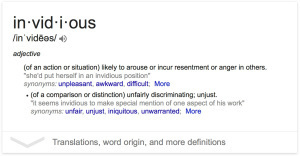 Julie can plot a whole book before she writes it. I can’t do that. Jessie can write more than 5000 first draft words in a sitting. I’ve never done that. Sherry can write the beginning, then write the end, then swoop back and do some of the middle. I did that once with a short story, but I’ve never achieved it with a novel. Liz can balance writing two series with a full-time, serious job. I couldn’t do that when I was her age, and I certainly can’t do it now. And Edith can complete her entire daily word count before I am even out of bed.
Julie can plot a whole book before she writes it. I can’t do that. Jessie can write more than 5000 first draft words in a sitting. I’ve never done that. Sherry can write the beginning, then write the end, then swoop back and do some of the middle. I did that once with a short story, but I’ve never achieved it with a novel. Liz can balance writing two series with a full-time, serious job. I couldn’t do that when I was her age, and I certainly can’t do it now. And Edith can complete her entire daily word count before I am even out of bed.
This is all fascinating, and believe me, I am happy for the skills and achievements of my friends, but sometimes, when I compare myself to them, I feel a little…envious. It’s the Invidious Comparison.
I was lucky to have a lot of mentors when I was coming up in the corporate world, and it was one of them who explained to me, when I was quite a young manager, the Invidious Comparison.
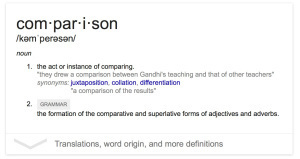 Invidious actually means likely to arouse or incur resentment or anger in others, but the way she used Invidious Comparison, it meant that situation when we are jealous of something we don’t even particularly want. The classic example is your brilliant sales person. She’s a lone wolf, she loves killing what she eats, creating her own rewards by living on commission. She hates paperwork and managing others, and the thought of tying her success to that of subordinates gives her hives. She’s happy in her job, and you’re thrilled to have her. But then time goes by. People who were hired after her, people who might not even have been as good at sales as she is, get promoted into management. They have other talents. They are good mentors and bosses. They love the minutiae of paperwork, the discipline of the sales pipeline, the feeling of having a team. And the brilliant sales person, in spite of herself, even though she would rather die than be a manager, starts to get jealous. Sooner or later, one of these promoted people ends up being her boss. And it drives her crazy. Even though she doesn’t want the job.
Invidious actually means likely to arouse or incur resentment or anger in others, but the way she used Invidious Comparison, it meant that situation when we are jealous of something we don’t even particularly want. The classic example is your brilliant sales person. She’s a lone wolf, she loves killing what she eats, creating her own rewards by living on commission. She hates paperwork and managing others, and the thought of tying her success to that of subordinates gives her hives. She’s happy in her job, and you’re thrilled to have her. But then time goes by. People who were hired after her, people who might not even have been as good at sales as she is, get promoted into management. They have other talents. They are good mentors and bosses. They love the minutiae of paperwork, the discipline of the sales pipeline, the feeling of having a team. And the brilliant sales person, in spite of herself, even though she would rather die than be a manager, starts to get jealous. Sooner or later, one of these promoted people ends up being her boss. And it drives her crazy. Even though she doesn’t want the job.
The Invidious Comparison.
So every morning, when I tumble out of bed and see that Edith has posted that she’s already made her word count and is off to have fun adventures on the day, I’m a little jealous.
Or I might plan a long weekend and think I am going to write 15,000 words in three days, like Jessie. But I will inevitably fail. And send myself through a whole guilt, grief cycle which will waste even more time.
The Invidious Comparison.
It’s ridiculous, I know. If I got up and got my word count done like Edith does, I’d be obliterating my absolutely favorite thing about not having a corporate job–sleeping in and staying in my pjs until after my second cup of coffee. I love it. It makes me so happy.
And if I were capable of binge-writing, first of all, it would make me an even worse procrastinator than I am. And secondly, it would take me back to the way I wrote when I had kids and a full-time job, which I didn’t enjoy nearly as much as I enjoy my writing schedule now.
I can’t do what they can do.
So I have to play to my strengths–to wit, a certain relentlessness, and a great fear of shame in the public square if I turn in a really awful book. Or no book at all.
It works for me.
Each of the Wickeds has different strengths, different weaknesses and different ways of working. When I’m seeing clearly, I know that’s part of what makes it all work. It’s part of what goads each of us to be better and try new things. But if we try them, and they aren’t helpful, it’s fine to set those new things down and move on.
People love to tell you that if you don’t do such and such, you can’t write a book.
“If you don’t get up at 5:00 every morning and have your word count done by 10:00 am, you can’t write a book.”
“If you don’t write everyday, you can’t write a book.”
Poppycock. The disempowering message from these morons is, “You can’t write a book.”
But you can. You can produce one book every ten years if you want to. You can write only when the moon is full. You can self-publish a 400 page tome every three months. Do whatever you want.
Because if you’re not doing what you want, why are you doing it at all? There are plenty of easier ways to pass the time.
But when you choose one path, you can’t be jealous of the other people who go down a different path, and do it a different way, and find success.
Because that’s the Invidious Comparison.
Filed under: Barb's posts

December 29, 2014
The Sad Saga of Suicide Santa
by Barb, somewhere on the road between Boston and Key West
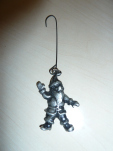
Suicide Santa
Christmas is my favorite holiday and I love all the traditions and rituals, both high and low, big and small. One of the great things about spending time with loved ones over the holidays is the common experiences that build up, which provide fodder for wild stories and quiet conversations for years and years to come. One of the small traditions at our house is the still evolving Saga of Suicide Santa.
Suicide Santa is a small pewter ornament who always goes near the top of the tree. Because he is tiny and unshiny, he was often overlooked when it came to taking ornaments off the tree. For several years, every time we dragged the tree down the front steps, we’d hear,
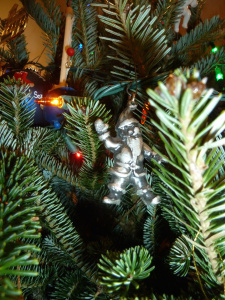
Suicide Santa in situ
Thunk.
Thunk.
Thunk
Clink.
And there he’d be on the step.
“Oh, we forgot Santa again,” we would say, blaming ourselves.
After that we were more conscious. “Did you find Santa?” my husband, Bill, would ask, as we took down the tree.
“I can’t find him anywhere,” I’d complain. “He must have burrowed his way to the center of the tree.”
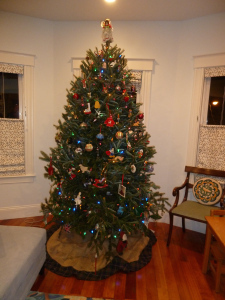
The tree
Thunk.
Thunk.
Thunk.
Clink.
Santa started getting farther and farther from the house and closer and closer to the curb where the Public Works truck would pick up the tree. But we always found him–on the walk, on the curb, and once, memorably, in the driveway, in April, after the snow had melted.
“He’s doing it on purpose,” Bill said. “I think he’s trying to do away with himself.”
After that, Bill became even more vigilant, but for me, bitterness set in.
“Did you take Suicide Santa off the tree?” Bill would ask.
“I’m sure I did.”
“Is he in the ornament box?”
“I’m certain he is, but I’m not pawing through all those layers looking for that damn thing.”

Suicide Santa on the sidewalk
Thunk.
Thunk.
Thunk.
Clink.
Of course, there are more benign explanations. Perhaps he doesn’t like us and is trying to find a home where he’ll be more appreciated. After all, I’ve just said he is small and dull and a pain in my @#$, which are probably the worst things you can say about a Christmas decoration. Maybe I should have titled this post “The Exciting Escapades of the Escaping Ornament.”
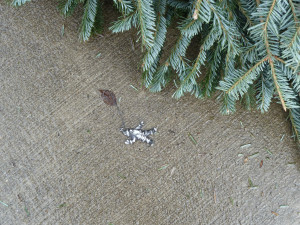
Suicide Santa does it again
But Santa is stuck with us, and we are stuck with him. I took the final photo here as we got into the car to head south. I scooped Santa off the sidewalk and put him in my bag. Can Santa survive and 3500 mile round-trip journey and find his way back to the Christmas ornament box?
Stay tuned.
Readers, do you have a silly, idiosyncratic holiday tradition? We’d love to hear about it!
Filed under: Barb's posts




